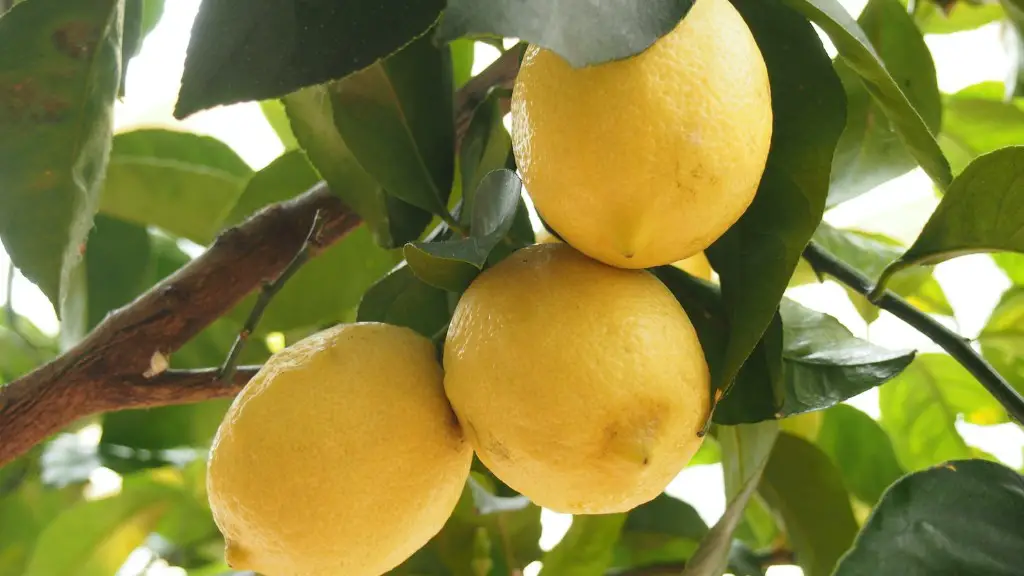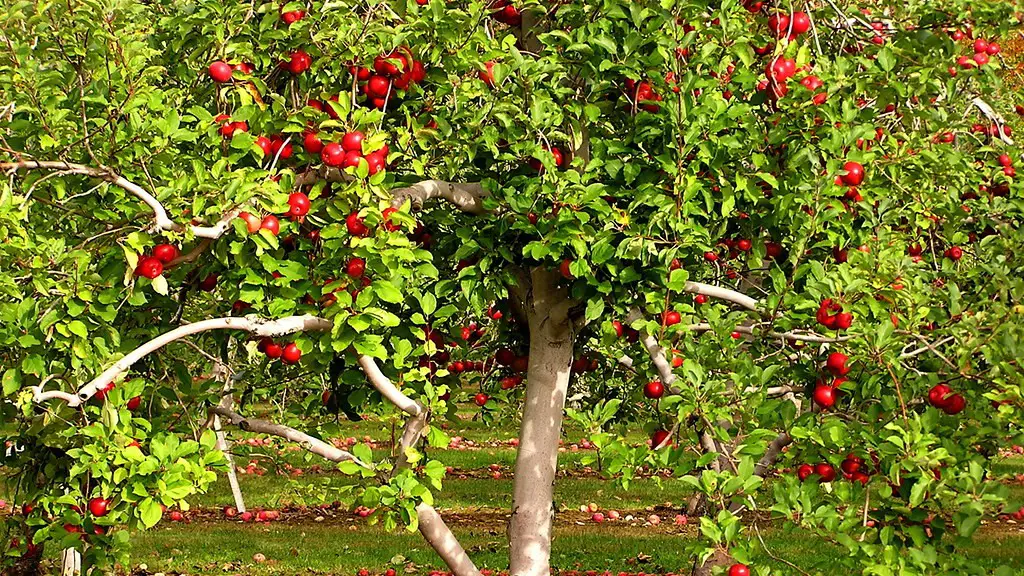Taking proper care of your lemon tree in a pot is an important step in ensuring its health and prompting it to produce sweet, juicy fruits. Here are some tips on how to properly manage the health of your lemon tree in a pot:
1. Select a pot for your lemon tree that is about double the size of the current root ball. The pot should have plenty of drainage holes and should have glazed ceramic material for the sides and the bottom.
2. Prepare soil mix for planting the lemon tree in the pot. A great soil mix consists of equal parts of loam, sand, and perlite. Also, add some compost material to improve drainage.
3. Place the lemon tree in the middle of the pot and fill it with the prepared soil mix. Firmly pack the soil around the roots, ensuring the tree is standing upright and the top of the root ball is level with the rim of the pot.
4. Water your lemon tree regularly and make sure that the soil is mildly moist but not wet at all times. If you’re not sure if the soil is moist enough, carefully prod the soil with your finger; if the top inch or two is moist, your tree is fine.
5. Place the potted lemon tree in an area that receives full sunlight for most of the day. Also, make sure to rotate the pot every week or two so that the tree gets equal exposure to sunlight.
6. Fertilize the pot once in a month with citrus fertilizer that is high in nitrogen. That helps the roots to absorb the necessary nutrients from the soil and aids in healthy growth.
7. Prune off dead, diseased, and insect-infested branches. This will help prevent further damage and keep the tree healthy and strong.
Humidity
It is important to maintain the proper humidity level for the lemon tree. Using a humidifier near the pot or misting the soil regularly can help maintain the humidity and promote healthy growth. Additionally, grouping several plants together will increase the surrounding humidity.
Also, keeping the pot near a large body of water, like a fountain or an aquarium, will help increase the humidity in the area and benefit the health of your lemon tree.
An effective trick to raise the humidity level is to cover the pot with a clear plastic bag. This traps in the moisture and increases the surrounding humidity level, which helps in producing strong and healthy leaves.
Temperature
Maintaining the optimum temperature is also very important for a lemon tree in a pot. Place the pot in an area where it gets proper sunlight and ventilation and try to keep the temperature between 55 and 90 degrees Fahrenheit. This will help reduce the risk of root-rot and other diseases.
For extra protection during cold winter months, try covering the lemon tree with burlap and keep a small, 10-inch space heater near the pot to keep the temperature of the surrounding air comfortable.
You can also cover the pot with a thermal blanket or bubble wrap during winter, as this will help keep the pot insulated and retain the heat for longer periods of time.
Interior Air Flow
It is essential to maintain proper air circulation inside the pot for healthy growth. You can do this by installing ventilation fans near the pot or by placing the pot near an open window. This helps keep the air fresh and prevents the growth of mildew which can cause damage to the tree.
Also, make sure to keep the area free of debris and dirt, which can clog up the ventilation system and prevent good air circulation.
Re-potting
It’s a good idea to re-pot your lemon tree at least every couple of years. To re-pot, gently remove the root ball from the pot and then place it in a larger pot with fresh soil. Fill around the root ball with soil and make sure the tree is firmly in place and standing upright.
Firmly press the soil around the root ball and water the tree thoroughly. You can add mulch to the soil for additional nutrients and to help retain moisture. Then, place the pot in the usually spot with plenty of sunshine.
Watering Schedule
Watering is the most important aspect of taking care of a lemon tree in a pot. Too much or too little water can have several adverse effects on the tree’s health. It’s important to maintain a consistent watering schedule to ensure optimum growth.
Typically, you should water thoroughly as soon as the surface soil begins to dry. It’s better to water a little more than not enough. During the hot summer months, you may need to water more frequently than in the cooler months.
Having a good drainage system in the pot is also very important to prevent root-rot. Make sure the pot has plenty of drainage holes and use a soil mix that is well-draining.
Pest Control
Pests can be a common problem for lemon trees in pots, so it’s important to keep a watch out for any signs. Some common pests are aphids, mealybugs, whiteflies, and spider mites. Regularly inspecting the tree will help you spot any signs of pests quickly and take action before the problem gets serious.
Using organic materials like neem oil, insecticidal soaps, or horticultural oils is the best way to get rid of pests. Make sure to follow the instructions and precautions on the label to ensure proper treatment.
You can also try introducing beneficial insects like ladybugs and green lacewings to the pot, as they will help keep pests away.




